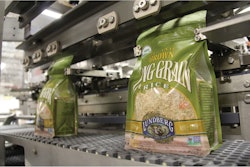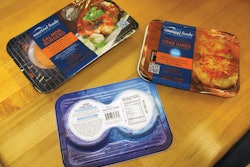
To enhance business efficiencies and improve product traceability along the supply chain, companies within the North American consumer packaged goods, fresh foods, grocery, and foodservice industries have come together to develop guidance for industry-wide adoption of a single standard for case labeling information for finished products. The result of this collaborative process is the publication, “North American Industry Guidance for Standard Case Code Labeling for Extended Product Attributes,” from GS1 US and GS1 Canada. The voluntary implementation of this guidance for products in the food industry enables trading partners to share critical, dynamic product information about their food products, such as batch and lot Numbers, “Best by” and “Use by” dates, and other types of product information.
“Industry manufacturers and retailers came together to define standardized guidance for the application of case-level GS1-128 bar codes that enables support for current and future supply chain practices, including product traceability,” says Greg Buckley, Sr. director, Customer Supply Chain & Logistics at PepsiCo Inc. “These GS1-128 standards will drive efficiency and new capability across our supply chain and will allow us to use one common bar code on product that is produced for multiple channels of trade.”
The publication outlines basic definitions needed to understand and implement standardized product case labeling, along with specific guidelines for the use of human-readable information as well as the GS1-128 bar code used to capture multiple product attributes in one scan. Additionally, the document explains how the use of the GS1-128 bar code can streamline business processes and improve product traceability and food safety in the supply chain. Industry stakeholders will also find guidance for category-specific requirements and technical considerations for the application of case labels, including printing specifications and symbol placement on cases.
“Consistent with our mission, GS1 US and GS1 Canada helped bring the food industry together to find a standards-based solution to an industry challenge by considering common business practices and various supply chain processes,” says Mary Wilson, vice president of Standards Management, GS1 US.
“This document has far-reaching benefits for food manufacturers, retailers, and distributors from Canada and the United States,” says Mike Sadiwnyk, senior vice president, Global Relations & Chief Standards Officer, GS1 Canada. “It represents North American industries coming together to define a foundation for the deployment of the new business-to-business applications that are needed to power more efficient and visible supply chains.”
As industry practices evolve, GS1 US and GS1 Canada will continue to engage the community to ensure that updates to the document will reflect process changes, regulatory requirements, and technological developments taking place in industry.


























